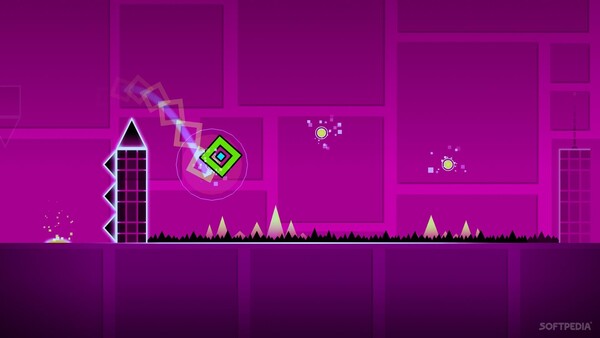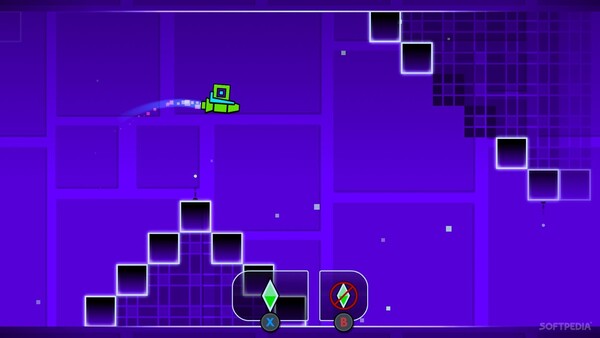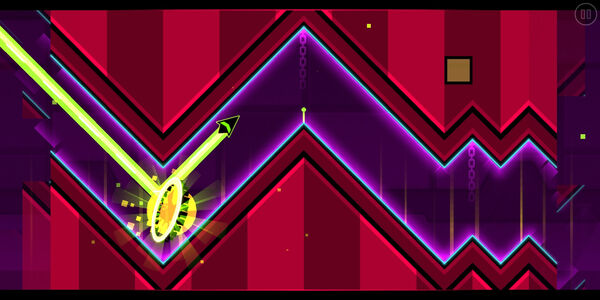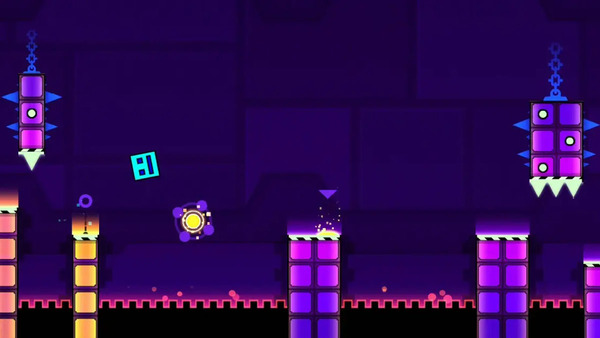Popular Now
Introduction
Geometry Dash is a popular rhythm-based platformer game developed by RobTop Games. Since its release in 2013, it has attracted millions of players worldwide with its fast-paced gameplay, catchy music, and challenging levels. The core of the game revolves around controlling a small cube as it jumps and flies through levels full of obstacles, all synchronized perfectly to energetic electronic soundtracks.
Despite its simple one-button controls, Geometry Dash requires sharp reflexes, precision, and excellent timing to successfully navigate its increasingly difficult stages. Whether you’re a complete beginner or looking to improve your gameplay and level design skills, this comprehensive guide will walk you through everything you need to know to master Geometry Dash. From basic controls and game mechanics to advanced strategies and level creation, you’ll gain the knowledge needed to conquer the game.
Understanding the Basics of Geometry Dash
Geometry Dash is a side-scrolling platformer where the player controls a cube (or other shapes unlocked later) through a series of levels filled with spikes, gaps, and other deadly obstacles. The main goal is to reach the end of each level without dying. Levels are designed in sync with the music, making rhythm an essential component of gameplay.

Core Gameplay Mechanics
The gameplay uses very simple controls. You tap the screen or click a key to make your cube jump. Timing your jumps perfectly to avoid obstacles is key. Some levels also introduce new mechanics such as flying or gravity changes that require pressing or holding buttons differently.
Each level is set to a fast-paced electronic music track. The obstacles and jumps are often timed to the beat, helping players anticipate hazards. Dying means restarting from the beginning or from the last checkpoint if you are in practice mode.
Modes of Play
-
Normal Mode: You start at the beginning and try to finish the level without dying.
-
Practice Mode: You can place checkpoints anywhere in the level. When you die, you restart from the last checkpoint instead of the beginning, allowing you to practice difficult sections repeatedly.
Getting Started: Mastering Basic Controls
The first step to playing Geometry Dash is understanding the controls. Despite the simple input method, precision is everything.

Jumping
To jump, simply tap the screen (on mobile) or press the spacebar/left mouse button (on PC). The cube will jump over obstacles. The timing of the jump is critical—too early or too late will cause your cube to hit spikes or fall into gaps.
Holding the Jump
Some levels feature flying or other mechanics where holding the jump button is required. For example, when flying a ship, holding jump moves the ship up, and releasing it makes it descend. These mechanics add complexity but are vital to progressing through more advanced levels.
Practice Mode
Practice mode is invaluable for beginners. It allows you to place checkpoints so you don't have to restart the entire level upon death. Use practice mode to get familiar with each part of the level before attempting a full run.
How to Read the Level and Sync with Music
Understanding the rhythm of the music is a crucial part of mastering Geometry Dash.
Timing Jumps with the Beat
The levels are designed so that obstacles and jumps align with the music's beats. Try to tap or hold the jump button in time with the music. This synchronization often provides natural cues to when the next jump is needed.

Learning Level Patterns
Most levels follow repeating obstacle patterns that sync with the soundtrack. As you replay a level, pay attention to the timing and arrangement of spikes, orbs, and portals. Memorizing these patterns reduces surprise deaths and improves reaction times.
Tips for Beginners
-
Play levels with slower music first to get used to timing.
-
Use headphones to better hear beats and rhythm.
-
Watch gameplay videos to see how experienced players time their moves.
Using Practice Mode to Improve
Practice mode is one of the most effective tools to get better at Geometry Dash.
Setting Checkpoints
While in practice mode, press the pause button and place checkpoints anywhere in the level. After dying, you restart from the last checkpoint rather than the beginning. This lets you focus on mastering difficult sections without replaying easier parts repeatedly.
Repetition Builds Muscle Memory
Replay tricky sections multiple times. With each attempt, you’ll improve timing and become more confident. Practice mode encourages patience, helping you avoid frustration from constant full-level restarts.
Learning from Mistakes
Use practice mode to identify where you die most often. Pay attention to the exact spot and the obstacle causing the failure. Once you know your weak points, focus your practice sessions on those areas.
How to Progress Through Levels Effectively
Geometry Dash offers a gradual difficulty curve, with early levels being relatively easy and later ones requiring mastery of mechanics.
Start with Easy Levels
Begin with beginner-friendly levels like “Stereo Madness” and “Back on Track.” These help you learn the controls and rhythm without overwhelming difficulty.
Move on to Medium Difficulty Levels
After completing the easy levels, try medium difficulty stages such as “Dry Out” or “Base After Base.” These introduce faster speeds and more complex obstacle layouts.
Challenge Yourself with Hard and Demon Levels
The hardest levels are often labeled “hard” or “demon” difficulty. These require memorizing level layouts and precise timing. Do not rush into them; instead, develop your skills gradually.
Advanced Gameplay Techniques
After mastering the basics, you can refine your skills by learning more advanced gameplay techniques.
Understanding Portals and Orbs
Portals and orbs change how your cube moves or behaves.
-
Portals: Change your icon’s form (e.g., from cube to ship or wave), affecting movement style and controls.
-
Orbs: These provide boosts or gravity changes. For example, yellow orbs can cause the cube to jump higher, while blue orbs invert gravity.
Learning when and how to interact with these elements is essential to progressing in advanced levels.
Timing and Precision
Advanced levels demand perfect timing and reaction. Try to anticipate upcoming obstacles by looking ahead rather than focusing only on the immediate area. Develop muscle memory by repetitive practice and remain calm under pressure.
Exploring the Level Editor
Geometry Dash also offers a level editor where you can create your own custom levels.
How to Create Custom Levels
The editor gives you access to all game elements, including blocks, spikes, orbs, portals, and music synchronization tools. You can design levels to test your creativity or simulate challenging gameplay sections for practice.

Sharing and Playing Custom Levels
Once your level is created, you can share it with the Geometry Dash community. Playing custom levels designed by others exposes you to new challenges and ideas, enhancing your gameplay experience.
Personalizing Your Gameplay
You can customize your icon’s appearance, colors, and trails, adding a personal flair to your game experience.
Unlocking Customization Options
By collecting diamonds in levels and completing achievements, you unlock different shapes, colors, and effects for your icon. Customization does not affect gameplay but makes your experience more fun and unique.
Adjusting Settings to Reduce Distractions
Some players find turning off music or reducing visual effects helpful for focusing on tricky parts. You can adjust sound and visual settings in the options menu to suit your playstyle.
Tips for Staying Motivated and Improving
Geometry Dash can be challenging, and frustration is common. Here are some tips to stay motivated:
-
Set Small Goals: Aim to complete small sections or easier levels before tackling harder ones.
-
Use Practice Mode Often: Avoid burnout by breaking the game into manageable chunks.
-
Watch Tutorials: Many expert players post videos explaining tricky parts.
-
Join Communities: Engage with other players in forums or social media for tips and encouragement.
Conclusion
Geometry Dash combines simple controls with challenging gameplay that tests your timing, reflexes, and rhythm. Mastering the game involves understanding its mechanics, practicing diligently in practice mode, and gradually working through progressively harder levels.
By syncing your jumps with music, learning level layouts, and utilizing advanced techniques like portals and orbs, you can enhance your performance. Exploring the level editor adds an extra dimension of creativity and depth to the game.
Remember, success in Geometry Dash comes from patience and persistence. Keep practicing, customize your experience to stay motivated, and most importantly, enjoy the rhythmic thrill of this addictive platformer. With dedication, you’ll soon be conquering levels that once seemed impossible.

















